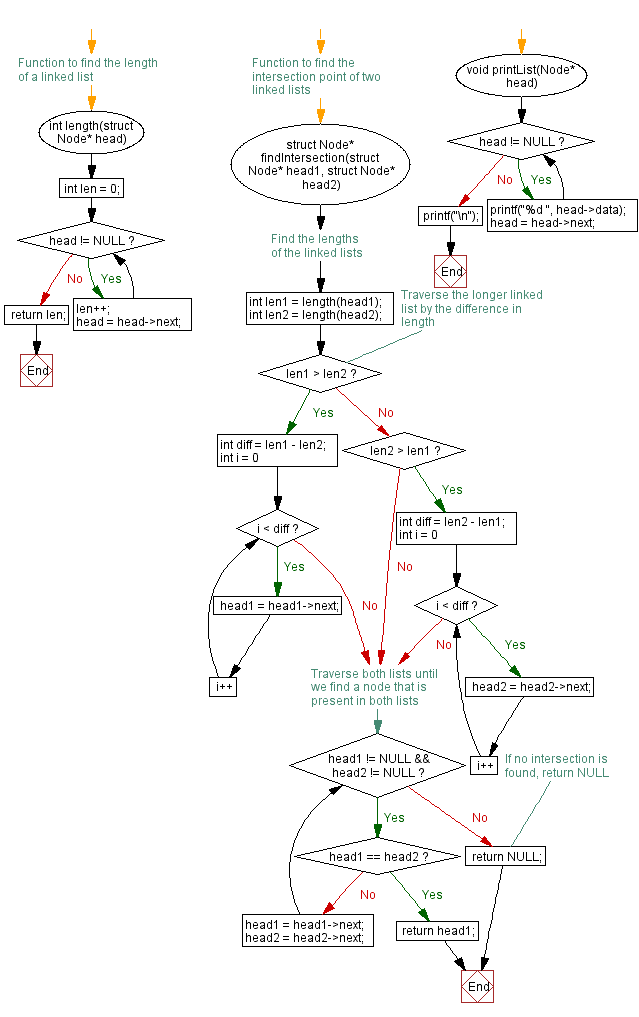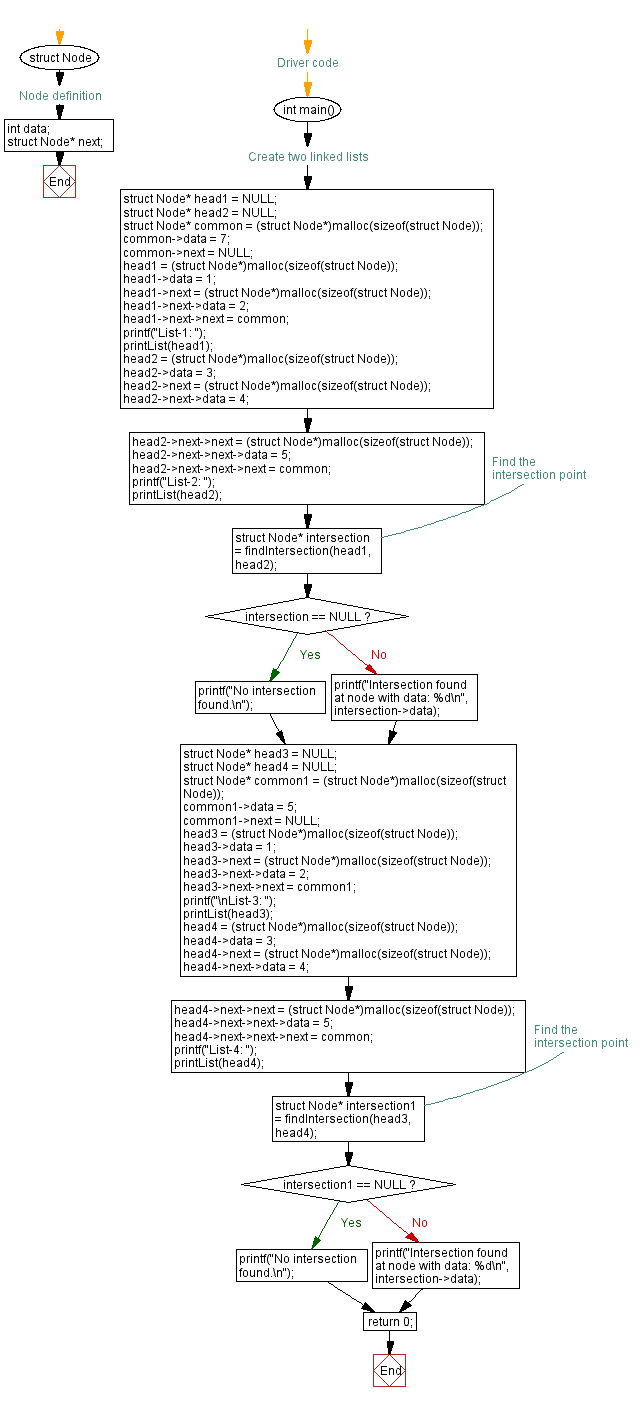C Exercises: Find the point at which two singly linked lists intersect
42. Intersection Point Detection Variants
Write a C program to find the point at which two singly linked lists intersect.
Sample Solution:
C Code:
#include<stdio.h>
#include <stdlib.h>
// Node definition for a singly linked list
struct Node {
int data;
struct Node* next;
};
// Function to calculate the length of a linked list
int length(struct Node* head) {
int len = 0;
while (head != NULL) {
len++;
head = head->next;
}
return len;
}
// Function to find the intersection point of two linked lists
struct Node* findIntersection(struct Node* head1, struct Node* head2) {
// Find the lengths of the linked lists
int len1 = length(head1);
int len2 = length(head2);
// Traverse the longer linked list by the difference in length
if (len1 > len2) {
int diff = len1 - len2;
for (int i = 0; i < diff; i++) {
head1 = head1->next;
}
} else if (len2 > len1) {
int diff = len2 - len1;
for (int i = 0; i < diff; i++) {
head2 = head2->next;
}
}
// Traverse both lists until we find a node that is present in both lists
while (head1 != NULL && head2 != NULL) {
if (head1 == head2) {
return head1;
}
head1 = head1->next;
head2 = head2->next;
}
// If no intersection is found, return NULL
return NULL;
}
// Function to print the linked list
void printList(struct Node* head) {
while (head != NULL) {
printf("%d ", head->data);
head = head->next;
}
printf("\n");
}
// Driver code
int main() {
// Create two linked lists with a common node
struct Node* head1 = NULL;
struct Node* head2 = NULL;
struct Node* common = (struct Node*)malloc(sizeof(struct Node));
common->data = 7;
common->next = NULL;
// List 1
head1 = (struct Node*)malloc(sizeof(struct Node));
head1->data = 1;
head1->next = (struct Node*)malloc(sizeof(struct Node));
head1->next->data = 2;
head1->next->next = common;
printf("List-1: ");
printList(head1);
// List 2
head2 = (struct Node*)malloc(sizeof(struct Node));
head2->data = 3;
head2->next = (struct Node*)malloc(sizeof(struct Node));
head2->next->data = 4;
head2->next->next = (struct Node*)malloc(sizeof(struct Node));
head2->next->next->data = 5;
head2->next->next->next = common;
printf("List-2: ");
printList(head2);
// Find the intersection point
struct Node* intersection = findIntersection(head1, head2);
if (intersection == NULL) {
printf("No intersection found.\n");
} else {
printf("Intersection found at node with data: %d\n", intersection->data);
}
// Create two more linked lists without a common node
// (Simulating no intersection)
// ...
return 0;
}
Sample Output:
List-1: 1 2 7 List-2: 3 4 5 7 Intersection found at node with data: 7 List-3: 1 2 5 List-4: 3 4 5 7 No intersection found.
Flowchart :


For more Practice: Solve these Related Problems:
- Write a C program to find the intersection point of two linked lists using a hash table for node addresses.
- Write a C program to find the intersection of two linked lists by first aligning them based on their length differences.
- Write a C program to recursively determine the intersection point of two singly linked lists by modifying pointer references.
- Write a C program to check if two linked lists intersect and then merge them at the intersection point into a single list.
Go to:
PREV : Alternate K-Node Reversal Challenges.
NEXT : C Programming Stack Exercises Home
C Programming Code Editor:
Have another way to solve this solution? Contribute your code (and comments) through Disqus.
What is the difficulty level of this exercise?
